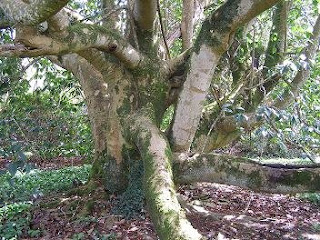One of my clients has a small but much-loved bay bush as the central focal point in a rather pretty little raised herb bed made of sleepers sideways on in a diamond pattern.
She rang me the other day in a right panic, insisting it was dying. It's always suffered mildly from vine weevil, which we've been keeping under control with a drench - but she was now convinced the little beggars had got it. So I promised to go and have a look.
The trouble with diagnosing plant problems is that it can be a bit like looking at those medical dictionaries which convince you that every time you have a headache you're about to die of a brain tumour. I realised as soon as I saw our little bay tree that it was a long way from dying - but then I started double-checking, just to make sure, and came up with a whole hypochondriac's litany of ailments, any one of which could turn out to be fatal.
Yes, there were plenty of glossy green leaves on it, and if you looked in the centre of the bush it was a deep, healthy green with lots of dense young growth. My client had panicked over some patches of yellowing leaves, which were rather undeniably a nutrient deficiency, and more specifically nitrogen deficiency. Remedy: a dose of liquid feed once a week until it's perked up a bit. Nothing more serious than that.
But look... some of the yellowing leaves have dark brown edges... and a curious dotting all over them. Hmm... I wasn't aware that bay could get rust, though that's exactly what it looked like. I decided I'd better look it up, just to be on the safe side.
Big mistake. Much like picking up that medical dictionary, I now have half-a-dozen horrible fates to consider for this poor little tree. It might have bay sucker - a mite that causes the edges of leaves to blacken and curl over. No curling on the leaves of my bay tree, mind, but then it might be early days... Now I discover that there's a new pest of bays, called bay rust mite, which only arrived on our shores last year after migrating from its usual home in the Med. As I read about black necrotic spots on the leaf surfaces I got really quite excited - rare diseases are almost as much of a buzz to discover as rare plants. Unfortunately (or fortunately, for my client) I discovered a picture of them on the
Central Science Laboratory's plant newsletter - and it looks nothing like my bay leaves at all.
So for the moment I'm keeping my fingers crossed and betting on the odds-on probability that all we have here is a hungry bay tree with a mild vine weevil problem. I'll dose it with vine weevil killer again and give it a nice slosh of seaweed pick-me-up and see if it turns the corner. If not, I'm afraid it may be terminal.











